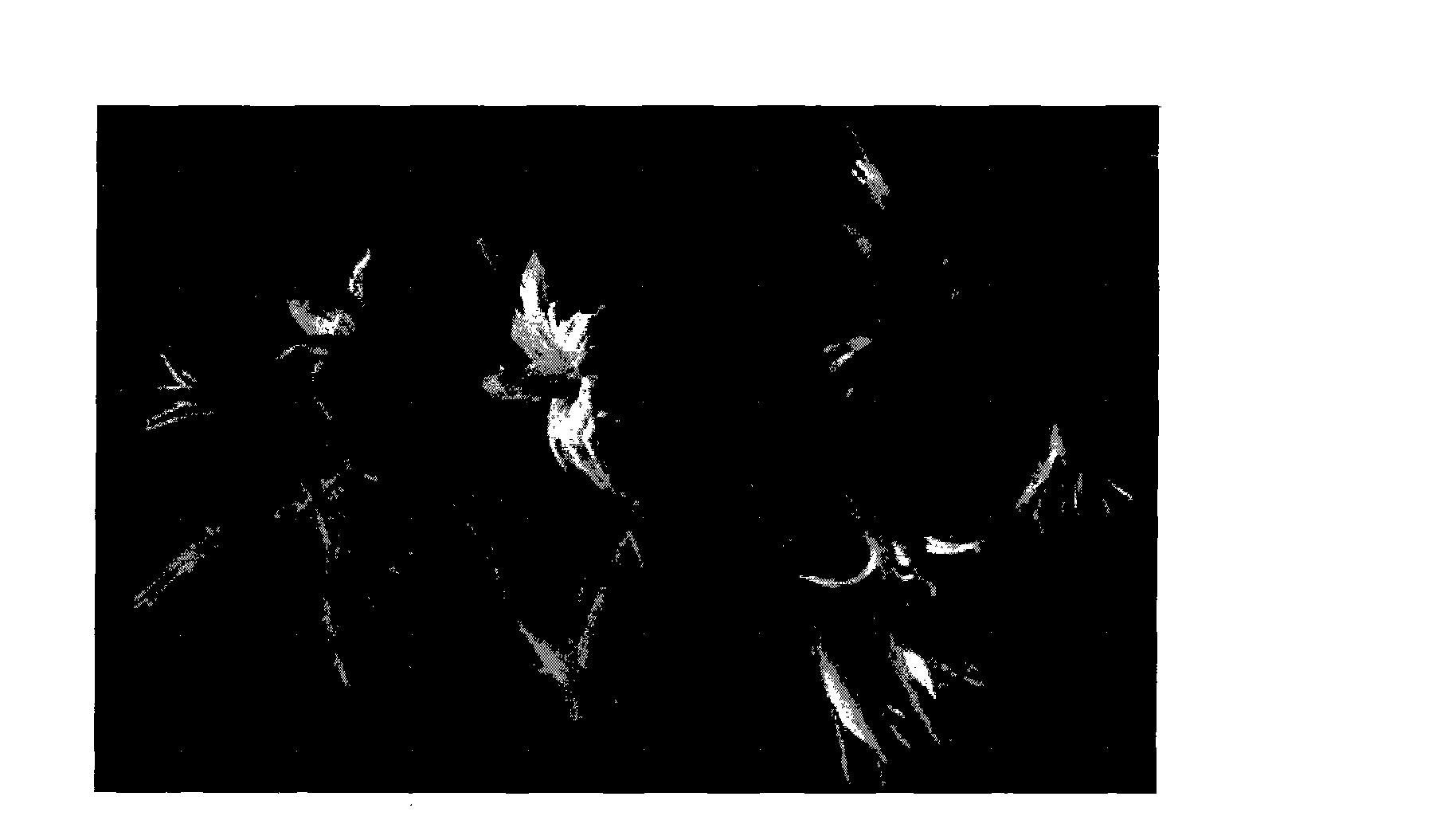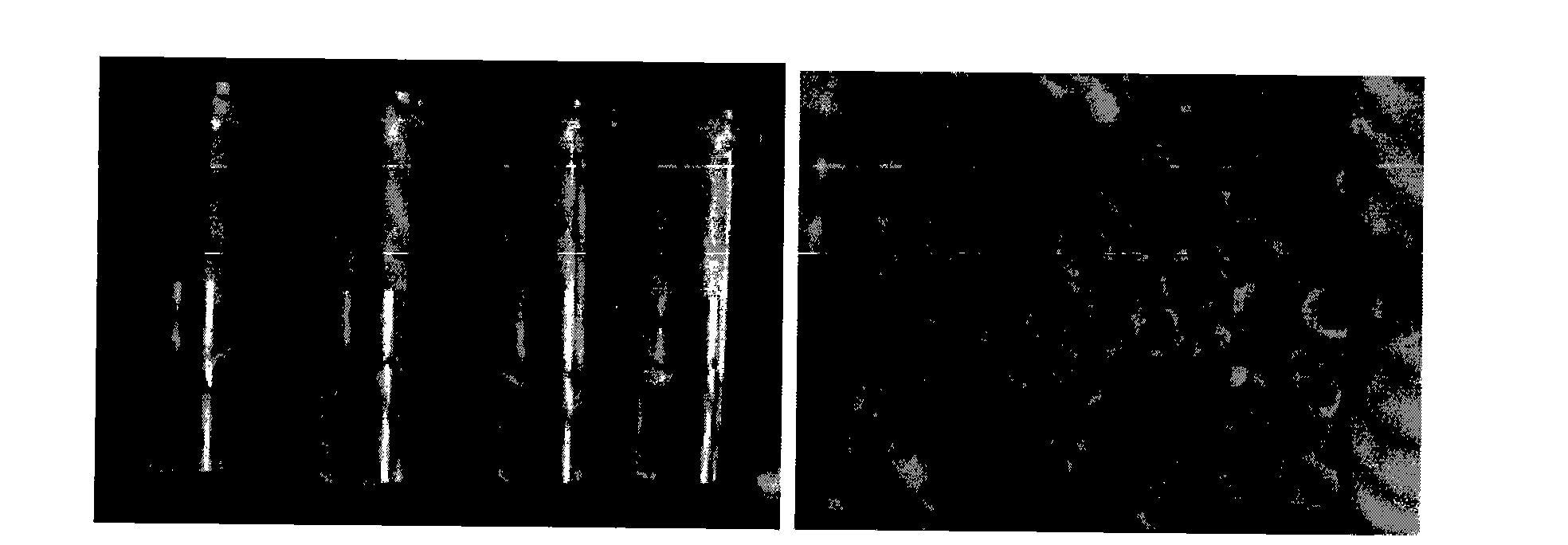Culturing method for tomato gynogenesis
A culture method and gynogenesis technology, which can be used in the field of further development and acquisition of plants, can solve problems such as death, ovary withering, and no callus obtained
- Summary
- Abstract
- Description
- Claims
- Application Information
AI Technical Summary
Problems solved by technology
Method used
Image
Examples
Embodiment 1
[0035] Embodiment 1 callus induction culture
[0036] 1 Materials and methods
[0037] 1.1 Materials The test materials are two hybrid tomato varieties 'Zhongza 101' and 'Zhongza 105' bred by the Chinese Academy of Agricultural Sciences Institute of Vegetables and Flowers (purchased from the Chinese Academy of Agricultural Sciences Institute of Vegetables and Flowers), planted in the spring greenhouse from 2006 to 2008 , spring greenhouses, open fields, autumn greenhouses and autumn greenhouses to ensure annual sample collection. Each material is planted with 40-100 plants each time and managed according to conventional methods. One week after the plants are planted, suitable flower buds are selected for ovary and ovule separation. .
[0038] 1.2 Screening of induction medium A total of 20 kinds of induction medium were selected, the components of which were B5 and MS (both purchased from Sigma Company) as the basic medium, and different concentrations (1-100 μmol.L -1 ) aux...
Embodiment 2
[0066] Embodiment 2 differentiation culture and rooting culture
[0067] 1. Materials and methods
[0068] 1.1 Materials The experimental material is the callus obtained in Example 1. When the callus is formed and grows to about 2 mm, it is transferred to the differentiation medium under sterile conditions. Ovary, half ovary and ovule block also can adopt common culture method, be inoculated on the culture medium in the Erlenmeyer flask or culture dish.
[0069] 1.2 Screening of differentiation medium 60 kinds of differentiation medium were selected - B5, MS, DBM II (Greshoff P.M.Doy C.H.1972), Nitsch and N6 were used as basic medium, and different concentrations (0.1-1000μmol.L -1 ) auxins (indole acetic acid IAA, α-naphthalene acetic acid NAA, 2,4-D) and cytokinins (kinetin KT, 6-benzylaminopurine 6-BA, TDZ, zeatin ZT), the sucrose concentration was 2%, agarose concentration is 0.8%, pH5.8-6.0.
[0070] When the callus reached 2mm in size, it was transferred to the diffe...
PUM
| Property | Measurement | Unit |
|---|---|---|
| length | aaaaa | aaaaa |
Abstract
Description
Claims
Application Information
 Login to view more
Login to view more - R&D Engineer
- R&D Manager
- IP Professional
- Industry Leading Data Capabilities
- Powerful AI technology
- Patent DNA Extraction
Browse by: Latest US Patents, China's latest patents, Technical Efficacy Thesaurus, Application Domain, Technology Topic.
© 2024 PatSnap. All rights reserved.Legal|Privacy policy|Modern Slavery Act Transparency Statement|Sitemap



